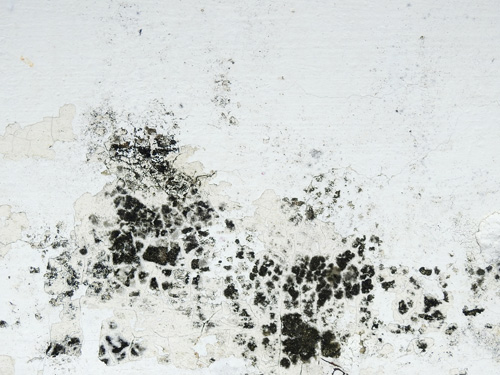Long COVID has left thousands of people grappling with strange, fluctuating, and often debilitating symptoms—long after their initial infection has passed. Fatigue, brain fog, palpitations, gut issues, shortness of breath, and strange allergic reactions are just a few of the lingering complaints. While much about this condition remains a mystery, one emerging lens offers clarity: histamine dysregulation and mast cell activation.
Could Long COVID actually be triggering a mast cell storm in the body?
Mast Cells: The Body’s Overzealous Alarm System
Mast cells are frontline immune responders that live in tissues throughout the body—especially in the lungs, skin, gut, brain, and blood vessels. When they detect a threat, they release dozens of chemicals including histamine, prostaglandins, cytokines, and more.
This response is crucial during acute infection. But in some people, particularly after a viral illness like COVID-19, mast cells can become chronically dysregulated. This condition is known as mast cell activation syndrome (MCAS)—a state where mast cells are constantly on edge, releasing inflammatory substances even in the absence of a true threat.
Histamine Overload and the Long COVID Symptom Cluster
Histamine plays a major role in regulating blood vessels, nervous system signaling, and immune communication. When there’s too much of it—or the body can’t properly break it down—chaos ensues. Many symptoms of Long COVID mirror those seen in MCAS and histamine intolerance:
- Rapid heartbeat, palpitations, POTS-like symptoms
- Brain fog, dizziness, headaches
- Fatigue and post-exertional malaise
- Shortness of breath, chest tightness
- Gastrointestinal issues (nausea, diarrhea, bloating)
- Skin itching, flushing, hives, or sensitivity to heat
- New-onset food or environmental sensitivities
This pattern is not coincidental—mast cells are implicated in nearly all of these systems.
Why COVID Might Set Off Mast Cell Chaos
There are several reasons why COVID-19 may provoke mast cell activation:
- Direct immune system dysregulation: The virus may leave the immune system in a state of overdrive.
- Viral persistence or reactivation: Lingering viral fragments may continue to provoke mast cells.
- Tissue damage: Especially in the lungs and gut, this damage may trigger ongoing mast cell activity.
- Microbiome shifts: Post-infection dysbiosis can lead to increased histamine production in the gut.
- Autonomic nervous system disruption: Common in Long COVID and tightly linked to mast cell behavior.
What Can Be Done? A Rooted Approach to Support
If you suspect histamine or mast cells are involved in your Long COVID journey, there are several tools that may help calm the system:
1. Lower the Histamine Load
Adopting a low-histamine diet can reduce the inflammatory burden and help stabilize symptoms. This includes avoiding aged cheeses, fermented foods, alcohol, leftovers, and certain fruits and vegetables.
2. Support Histamine Breakdown
Supplementing with DAO (diamine oxidase) before meals may assist in clearing histamine from the gut, especially if you’ve developed new food reactions.
3. Stabilize Mast Cells
Natural mast cell stabilizers like quercetin, vitamin C, luteolin, and nigella sativa (black cumin seed) may reduce mast cell degranulation. Pharmaceutical options like H1 and H2 blockers may also be useful under medical guidance.
4. Nervous System Regulation
Mast cells communicate closely with the autonomic nervous system. Breathwork, vagus nerve stimulation, gentle movement, and somatic therapy can be powerful tools in calming both mast cells and symptoms.
5. Microbiome Restoration
A disrupted gut flora may drive histamine issues. Stool testing and targeted pre/probiotic therapies can help reestablish a more balanced, less reactive gut environment.
6. Low Dose Naltrexone (LDN): Immune Modulation in Action
One of the most promising therapies for post-viral mast cell dysregulation and neuroinflammation is Low Dose Naltrexone. Originally used in higher doses for opioid addiction, LDN at doses between 0.5 and 4.5 mg works as an immune system modulator. It helps reduce neuroinflammation, calms overactive microglia in the brain, and stabilizes mast cells.
Patients with Long COVID and MCAS-like symptoms have reported significant improvement in fatigue, pain, mood, and allergic reactivity after starting LDN. It is typically well-tolerated and can be used alongside dietary and supplement-based strategies. Importantly, it may take several weeks to show effects, and dosing needs to be individualized.
You’re Not Imagining It—And You’re Not Alone
For many dealing with Long COVID, the symptoms have been frustratingly vague, fluctuating, and dismissed. But when you view these symptoms through the lens of mast cell activation and histamine overload, the picture becomes clearer.
Understanding this pathway opens the door to real, actionable support—from diet and supplements to nervous system work and immune modulation with tools like LDN. There is a path forward. And more people are finding it every day.






